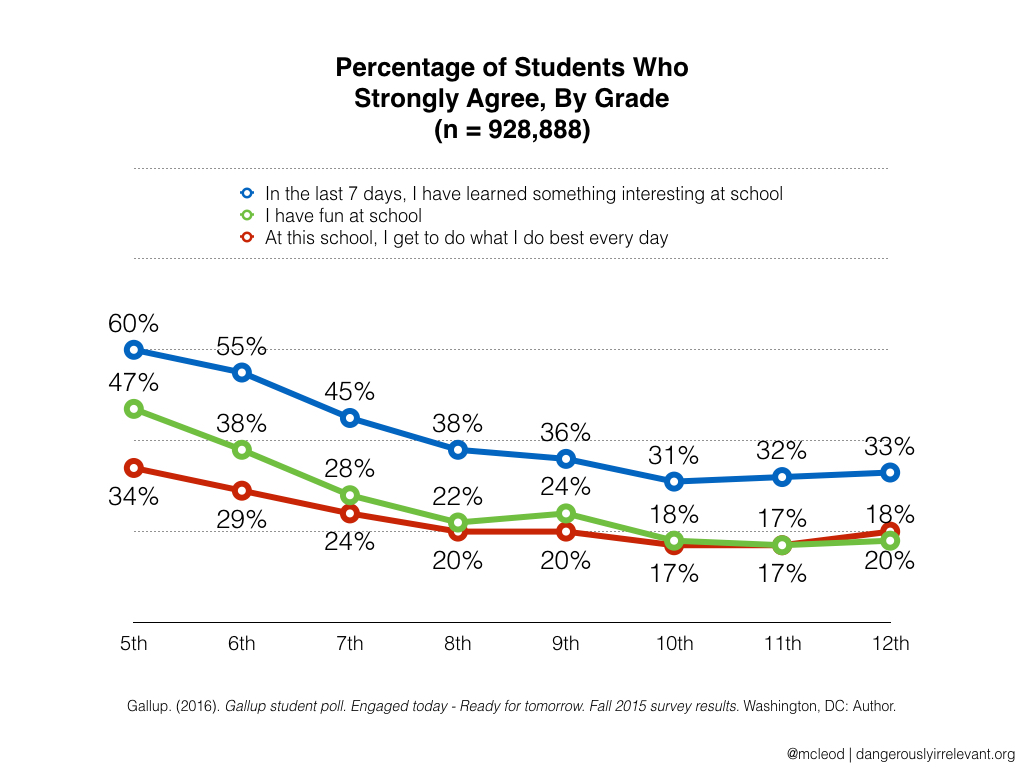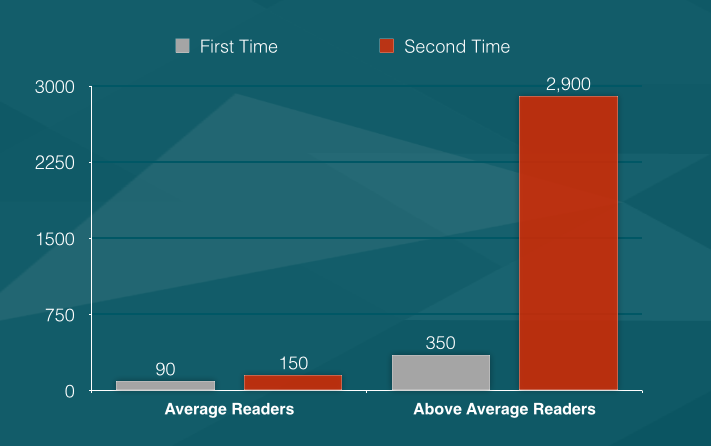Stop Worrying About the Achievement Gap

“Closing the Achievement Gap” is a term and movement that has been around for a while. Born out of good intentions, it’s essentially a recognition that we need to attend to students with lower grades. Fair enough. And yet I see this obsession flawed in a few ways and it once again is more about adults and accountability than caring for children.
The essence of the problem stems from the inherent flaws of our education system. We tend to focus mostly on students’ weaknesses and spend an exorbitant amount of time and money in attempting to remedy this.
When a student says, “school sucks” it might be for a number of factors but my intuition is that for the majority of them it’s because they spend time working on things they hate and an inverse proportion on things they enjoy.
Scott McLeod and I just released our new book on Different Schools for a Different World. Scott shares a graph from Gallup that offers some insight.

While all three of these results are troubling, it’s’ the last, the one in red that addresses the problem. How can we live with the idea that only 20% of students feel they spend time doing things they are good at? What if in your job you only spent 20% of your day doing things you do best?
In addition, research is clear that we get way more return on investment from focusing on our strengths than weaknesses.
Consider the experiment done in Nebraska in the 1950s on speed reading.
Tools and ideas to transform education. Sign up below.
…a study that shows how much your performance skyrockets when you invest in your natural talents. Subjects at the University of Nebraska were given two chances at a speed reading test. Those who were average at speed reading made solid gains (66% increase in words per minute) after getting training and learning new tactics. Yet the magic happened with the above average readers. Those who had a natural strength in speed reading saw an 828% increase in the number of words read per minute.

Ideas like genius hour and passion projects are getting closer to addressing the problem. But even when these are implemented, I fear that the “at risk” students are still being hammered with remedial support in order to close the achievement gap. I’m guessing they make up about 100% of students who don’t think they get to spend time at school doing things they are good at.
So what’s the solution? It’s not easy and I get it, a student that can’t read needs help and should receive it. My argument is we worry too much about those gaps and instead should invest more time in working on their strengths. In addition, the data and obsession we have with these gaps need to be tempered. Maybe a new measure should include how well we’ve identified student strengths and what efforts have been made to grow them. That shift would represent a fundamental and I dare say monumental change in schools.
cross-posted at ideasandthoughts.org
Dean Shareski is the Community Manager of the Canadian DEN (Discovery Educators Network) and lecturer for the University of Regina. With 24 years of experience as a K12 educator and consultant, he specializes in the use of technology in the classroom. Read more at ideasandthoughts.org.
Disclaimer: This weblog contains the opinions and ideas of Dean Shareski. While there may be references to my work and content which relates directly to my work, the ideas are mine alone and are not necessarily shared by my employer.
